FORECAST:
Easter Sunday (High 78, Low 53): Partly cloudy. Warm and breezy.
Monday (High 80, Low 60): Mostly cloudy. Muggy and breezy.
Tuesday (High 76, Low 65): Thunderstorms likely. A few thunderstorms may become severe.
EXTENDED OUTLOOK:
Wednesday (High 60, Low 45): Mostly sunny.
Thursday (High 61, Low 37): Sunny.
Friday (High 64, Low 34): Sunny.
Saturday (High 70, Low 38): Sunny.
PRONÓSTICO:
Domingo de Pascua (Máxima 78, Mínima 53): Parcialmente nublado. Cálido y ventoso.
Lunes (Máxima 80, Mínima 60): Mayormente nublado. Bochornoso y ventoso.
Martes (Máxima 76, Mínima 65): Probabilidad de tormentas eléctricas. Algunas tormentas pueden llegar a ser severas.
PERSPECTIVA EXTENDIDA:
Miércoles (Máxima 60, Mínima 45): Mayormente soleado.
Jueves (Máxima 61, Mínima 37): Soleado.
Viernes (Máxima 64, Mínima 34): Soleado.
Sábado (Máxima 70, Mínima 38): Soleado.
NOTES:
It is a good time of year to review severe weather safety.
If you want to catch the solar eclipse next week, I refer you to NASA's guidelines.
The National Weather Service in Nashville is still doing its Weather101 classes, and at the last one I was able to take (they are online and free, by the way), Scott Unger asked us to spread the word if we enjoyed it. Which I did. So I encourage any of you who are interested to take one of these classes. There are actually two lined up for April Fools Day, this Monday, the morning one on storm damage surveys, and the evening one about monsoons.
And this coming Wednesday will be the 50th anniversary of the April 3-4, 1974 tornado outbreak, often called the superoutbreak because of what a nightmare it was. If you lived through April 27, 2011, the event in April 1974 was similar, except it was spread out over more states, and a lot of it happened at night, lasted into the next morning. The Weatherbrains podcast had a great discussion about it this past Monday, which I think will continue this Monday. The show included Greg Forbes, who studied under Ted Fujita, the main guy who helped come up with the F-scale for rating tornadoes in the 1970's. Fujita definitely studied the tornadoes from this event. And there was another one in 1977, a really bad tornado that hit Smithfield, Alabama, that he considered rating an F-6. When they originally came up with that scale, the rating went all the way up to F-12 in theory, and they wondered if tornado winds could even get as high as Mach 1. I remember that from an old library book, which also still advised people to open windows if a tornado was coming. (Please don't try that. But they used to think it would keep the house from exploding because it lessened the difference in air pressure.) The original scale was also called the Fujita/Pearson scale. With the Enhanced Fujita scale, there is no allowance for a tornado to ever be higher than an E/F-5. But back in the day, Dr. Fujita theorized that at least an F-6 was possible. Things have come a long way. Another thing to note about the podcast, Kenneth Graham, who is now the head of the National Weather Service, used to be in charge of the local National Weather Service office in Birmingham. Some people might remember, for a while he was in charge of the National Hurricane Center as well. So it is always good to have him as part of a discussion. I actually met Dr. Forbes years ago. He's mostly retired, so I guess he wouldn't mind me saying, he said Fujita would have come out of his grave to upgrade the Tuscaloosa/Birmingham tornado in 2011 to an F-5 instead of the F-4 (or EF-4) rating it ended up with. And in his lecture, he mentioned that the EF-scale had raised the bar in a lot of ways as to what damage it takes for a tornado to get a really bad rating like that.
DISCUSSION:
At 5:30 PM, skies are sunny in Cullman. The temperature is 75 degrees, and it looks like that is going to be our High for the day. The Low this morning was 48. Our dewpoint is currently 46 degrees, which makes the relative humidity 36%. Winds are from the Southwest at 9 miles per hour, with higher gusts up to 16 mph. The barometric pressure is 30.00 inches and steady.
And let's take a quick glance around the rest of the Tennessee Valley. First our immediate neighbors, Jasper had a High of 79 and a Low of 41 today. Haleyville had a High of 76 and Low of 49 today, also under sunny skies.
Decatur had a High of 78 and Low of 51. Huntsville had a High of 77 and a Low of 50. Fayetteville saw a High of 75 and a Low of 52. Winchester saw a High of 73 and a Low of 46 today. And it remains breezy across the region, winds often gusting up to 20 miles per hour.
So we are still under the influence of that high pressure to our Southeast. At some point Tuesday we'll be dealing with the cold front currently draped over the Southern Plains, Midwest, into the Ohio River Valley.
Let's start with some good news. Tomorrow looks fabulous. It will be breezy again, but basically just a mix of sun and some clouds, nothing that will seriously hinder anyone's holiday plans. The High will be about in the 76-78 range and the Low about 52-54.
Then on Monday, we'll be clouding up more and warming up more. The High should get to about 80 degrees, warmest we've been so far this year, after a morning Low near 60. We'll have more of that warm, moist air coming in here. Notice on the upper-air forecast map from the GFS that our wind flow turns back to the West/Southwest even at 500 millibars (about 18,000 feet). The surface winds will be more South or Southeast at times, and those winds bring us warmer, more moist air, keeping us from cooling as much overnight.
And the idea of having some rain Monday night has pretty much gone away from the model guidance at this point. If we do see anything like that, it should stay isolated.
Then that cold front sure is looking robust on Tuesday. That looks like a strong jet stream with it. I enjoyed reading over a few of Bobby Boyd's analyses of the situation. Will share only one below.
Like Greg Forbes, he is enjoying retirement, but still has great thoughts to offer about the weather.
But let's stay focused on the basics of our local weather for now. Thunderstorms are likely on Tuesday, and we'll have to watch for the potential of severe weather, at least a few thunderstorms becoming severe. More on that below the main forecast discussion. As Mr. Boyd notes in the tweet I embedded above and a few more I remember scrolling through, the main threat may end up being focused in Tennessee along and East of Interstate 65. That is where the trends are leading my thinking anyway.
Around here we do have to look out for thunderstorms becoming severe, and almost all of us will see some rain or a thunderstorm at some point during the day or night. We will have gusty winds. The High should be in the mid, maybe upper 70's, the Low in the mid-60's.
The timing of the rain and storms is also still somewhat in question. I showed the GFS above, and the NAM is on board with that timing, where showers and storms are already moving through here in the early afternoon. (18Z is 1 PM CDT.) But the ECMWF continues to show a slower timing, as it often does. And it often gets that right. Will have to monitor the trends of the NAM as the event gets closer. Right now the NAM is trying to see out 72 hours, and it is a mesoscale model, based on data in North America. Those other two are global models that factor in the weather all around the world and so can predict a much longer time-range accurately. Out to 72 hours is about the limit for when the NAM stays reliable, at least that's been my experience. It's really best for about the 24-60 hour time range.
Even if the European global model does have it right, it would just mean that the main rain and thunderstorms would arrive in the evening instead of midday/early afternoon. That might be significant for our severe thunderstorm potential though, because it would give the air more time to destabilize. And the storms could happen at night for some of us. So those timing differences can be important.
Confidence in the forecast increases again on Wednesday. I doubt we even see a lingering shower in the early morning. We will become mostly sunny again with a High near 60, Low in about the mid-40's.
And now with high pressure moving in from the West, much drier air, it looks like we'll be sunny Thursday, starting the day in the upper 30's and only warming to about 60 degrees again, really good shot of cooler air behind this front.
Then the same basic trend for Friday, we have high pressure over our region at the surface, and at the upper levels, we have Northwest wind flow. That translates to clear skies and a cool day. We'll only get up into the lower 60's, and for the morning Low, most of us will be in the mid-30's, but some of the spots that are typically colder could even dip into the lower 30's, close to freezing. That's certainly the case as you get into Southern Middle Tennessee and up to places like Nashville and Middle Tennessee. But to keep it simple, many of us are likely to see frost from this cold snap.
Then on Saturday, looks like we stay sunny with still really low humidity levels, but the Low rebounding to the upper 30's, the High making it up to about 70 again.
Beyond that, the two global models diverge too much for it to be worth showing, much less trying to base a formal forecast on. The GFS wants to bring us some rain chances, and the ECMWF keeps us dry in days 8-10. If I had to bet on it, I'd bet on the European solution here, but even the scenario of rain coming back by Tuesday the 9th of April that the GFS suggests does not look high-impact. I think it's pretty safe to assume we'll see daytime Highs in the 70's and the Low in the 40's, maybe 50's by end of the tea-leaves period. Like I say, I'm not going to include that in the formal forecast up top, because this the month of April, and it shows in the model output. The weather pattern is too dynamic to really rely on a forecast beyond the next 7 days. But you can sort of note the trends.
Now let's look at the severe weather threat.
First of all, the main threat for organized severe weather looks to be on Monday, for our neighbors to the North and West.


From the lower Plains, parts of Texas, up through Missouri and even into the Ohio Valley, severe thunderstorms are possible over a large area on Monday. Around here on Monday, remember, we are not expecting any storms, and even late Monday night into early Tuesday morning, it's dicey whether we even see isolated rain around here. We will probably just be warmer than we're used to, cloudy, and breezy. The main focus for severe weather Monday will probably be in Central/Eastern Oklahoma, into far Southeastern Kansas, into parts of Missouri. That hatching in the 30% risk area means that severe thunderstorms capable of especially significant damage are possible. Some storms there may be supercells, the kinds of thunderstorms that storm chasers like to chase. They could produce especially large hail and also have a higher threat of producing tornado damage. But really anybody in that broad area could see some severe weather on Monday. Nothing to worry about around here.


Even though like I said, it's kind of dicey whether you can rely on it at 72 hours or so, I'm going to use the NAM to look at forecast parameters for around here on Tuesday. Because at this time range, using a global model doesn't seem right. And the SREF just didn't look right to me. It had the timing all off and was just a big mess, did not make sense with this weather pattern.
Between 1-4 PM, it does look like we'll have enough instability and wind shear to support severe thunderstorms.

But then if we take a forecast sounding from down around Smith Lake in Cullman County, it's kind of interesting. The instability is trending higher, you definitely have to pay attention to surface-based CAPE values of 1,500 j/kg or more, and Lifted Indices of -4 or -5. But then the wind shear may be our limiting factor for a bigger severe weather problem with this. We have good speed shear, like if you look at bulk shear or 0-6 km shear, those values are certainly sufficient. But if you look more at the turning of the winds with height, that really is not quite to where we'd want it to be for an organized tornado threat. The Storm Relative Helicity values are less than 200 m^2/s^2 even up at 3 kilometers. You notice it calculates the Significant Tornado Parameter value as struggling to even get up to a 1. So if this guidance is right, we would have mainly a threat for large hail and damaging straight-line winds in thunderstorms, but might mention the chance of an isolated tornado, especially since this is going to be April.

And for better or worse, I did decide to look at the GFS after all. Its look is similar to the NAM, but there are some differences.
First off, let's look at a forecast sounding for that area in about Marion, Lamar, Fayette counties in Northwest Alabama where there seems to be an uptick in the Energy Helicity Index at 4 PM Tuesday.

And this actually does look concerning, where we'd definitely have to include a tornado threat along with the threat for large hail and damaging thunderstorm winds. The instability is strong, and the wind shear, including the directional shear, is also plenty. Notice the 3 km Helicity here gets up to nearly 300 units, and the 1 km, so low-level turning of the winds, is close to 200. That is plenty, and it would be a favorable time of day for a tornado to occur. Notice the STP value is in the 1-2 range here, which is not overwhelming, but still worth taking seriously. This still doesn't look like a tornado outbreak per se, but I'd be curious to see if any of the other models like the NAM or even shorter-term models like the RAP or especially the HRRR were to pick up on that trend as we get closer to the event, like what if the parameters do become extra-favorable for a tornado in that general area. If storms scare you, please don't get hung up on this. This is nerdy babble from someone who gets hung up on details. A lot of these model trends never play out. And this situation is so uncertain that I really do feel like a nerd for noticing this.

If you take a forecast sounding from around the junction of the three counties around here - Cullman, Walker, Winston - about at Smith Lake, then the GFS is showing things a little closer to what the NAM was above. The helicity values are stronger, just enough to have to be concerned about a tornado potential in the mix, but also, the instability is only looking moderate. We see surface CAPE struggling to get to 1,000 units at 4 PM, where the NAM had us in excess of 1,500 units. If you look at Lifted Index, it also does not look as unstable.
So this would translate to basically what the NAM was showing, as far as the tornado threat saying marginal around here. The difference would be that via the NAM, our threat for large hail would be a little more of a concern.
There are still a lot of details to iron out, even though it's only three days away now. The ECMWF was showing a slower timing of the front and rain/storms ahead of it, and if that were to verify, then we could see more unstable air than the GFS suggests here and might be in for a stormy evening/night, where we'd have to rethink the whole thing as far as how the wind shear and the timing of the lift of the front will coincide with that stronger instability, if we get it.

.png)
The ECMWF doesn't have as many graphics in the public domain that are easy to use to do local severe weather forecasts, but unless the NAM (and then the other mesoscale models) keeps trending more in line with the GFS, I do have to consider how often its slower timing verifies with systems like this. And it is showing dewpoints in the mid-to-upper-60's between 1-7 PM on Tuesday. And that would be in line with how the NAM was showing similar dewpoint temperatures and strongly unstable air, strong surface CAPE, lifted indices well in the negative range. As far as any concern for a more significant severe weather threat in North Alabama or the bordering counties of Southern Middle Tennessee, this is the only concern I have that could really upset the apple cart and throw us a curve somewhere.

Overall I agree with the Storm Prediction Center forecast, which just blankets a large area all the way up into the Virginias with a 15% basic risk for severe thunderstorms Tuesday into Tuesday night. They may have to add a more enhanced threat level somewhere, but if they do, they will do that as new data comes in. There really isn't enough information right now to base that on, except some hints that East of I-65 in Tennessee could be a hot zone, like Bobby Boyd was analyzing, and makes sense to me.
One thing to keep in mind is that even if you are looking at the ECMWF more than the GFS, that surface Low is expecting to pass way up North, in the Ohio Valley. The farther you get away from that center of low pressure, the lower the chances of severe weather, as a general rule.
And this setup just looks kind of messy overall. It certainly does not have the look of a clear-cut severe weather outbreak. It looks like a setup where a few places in our region may get a more organized or significant chance of severe weather, but for most of us, at least on the Alabama side of this, that threat will probably stay on the lower end. For right now, it looks like the places most likely to have a more enhanced risk of severe weather would be along and East of Interstate 65 in Tennessee, and that risk could clip parts of Kentucky and West Virginia, even North Alabama, like around Huntsville, Scottsboro especially.
But until we get within less than 60 hours of the event and can analyze the mesoscale model stuff, I think the SPC outlook is spot-on, keeping a broad area under a basic 15% risk for severe thunderstorms. Notice it does include all of North Alabama and Southern Middle Tennessee. And it actually extends all the way down to Birmingham. As well as up to Nashville.

The National Weather Service in Birmingham has had the foresight to extend that into a marginal risk for severe weather even for some places South of Birmingham, like Tuscaloosa over to Anniston. And I used to make fun of how the national and local offices didn't always agree on where to draw the threat areas. But they are in pretty good agreement anyway. And after a while, I realized that the SPC has a really big job, trying to outline every single potential for severe weather across the country every single day, even if it is marginal. And they have to try to figure out the details. They have to think in more general terms to do that than the local forecast offices. The forecasters who know the local area can pick up on things a lot of times that the national centers might miss. I'm sure it's that way with hurricanes too, like someone who has experience with hurricanes in a certain part of Louisiana might could give a more detailed forecast than the Hurricane Center sometimes.
Anyway, I agree with the Birmingham office's idea that we're mainly looking at a damaging wind threat with this. It seems like the other local offices, when I was reading through the forecast discussions, said similar things but also said they were going to keep an eye out in case it were to become an all-modes severe weather threat. If the air does become more unstable, we'd need to mention a hail threat in the mix for sure. And the tornado threat is worth keeping an eye on, over the day or two, before the event unfolds. But for the moment, that is looking marginal for this system in North Alabama.
And just because I'm in one of my obsessive moods, and got distracted from finishing this forecast discussion numerous times this evening, I think before I wrap this up, I'll take a look at things in Tennessee for myself.
Well one thing that jumps out when I look at it again via the NAM is that it looks like a messy squall line, which makes sense with everything else we've looked at already.
Not showing it here, but checked the GFS, and it looks about the same.
This forecast sounding is from Wayne County, TN at 1 PM. This is really strong instability the NAM is advertising, more than 2,000 joules of surface-based CAPE. And the wind shear is just enough to be concerned with a tornado threat. Notice the STP is in 1-2 range. Supercell composite of 4-5 range.
Then if you look up Northeast of Nashville, along the Kentucky border, the NAM is predicting CAPE of about 2,000 joules combined with more than 200 units of helicity even at the lowest kilometer. And that would spell a fairly significant tornado threat. Notice the Supercell Composite is showing about a 10, and the Significant Tornado Parameter comes up to between 1-3 range. That is definitely getting concerning. This is way to our North, but it's just fun to look at.
And that makes sense with the position of the surface Low too.
The analog guidance has a wide range of mainly lower-end or routine severe weather events, but a lot of them did produce severe weather in Alabama, and all modes, including a few tornadoes in some of the events, certainly lots of them had numerous reports of damaging winds and large hail. It does sort of back up the idea that the greater tornado threat might be focused more up across the Tennessee or even up to about the Kentucky border. And that's if we see a tornado threat out of this.
Don't feel like posting more graphics, but looking at the GFS forecast soundings in TN as opposed to the NAM, it is not nearly as aggressive on the instability. But it is still plenty sufficient to support severe storms. And it agrees with the idea of the kind of wind shear that would support at least a low-end tornado threat. But I'm thinking the tornado threat may be more organized on the Tennessee side, especially East of the interstate.
And after several hours, off and on, of trying to add a halfway intelligent comment on the other stuff going on in the world, that made the news today, or in recent days . . . I have nothing.
I wrote several paragraphs, then deleted them all. Then wrote several more, thought I was making sense the second time, and deleted those too.
I have nothing that is worth saying.
Have fun with the egg hunts and political wars, whichever you find more fun in.
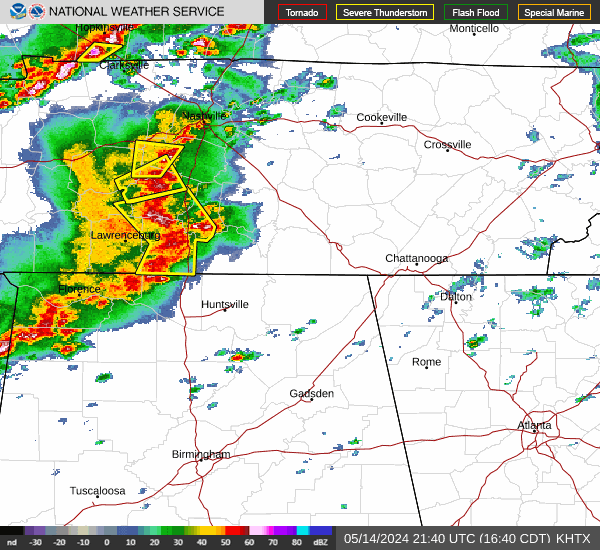
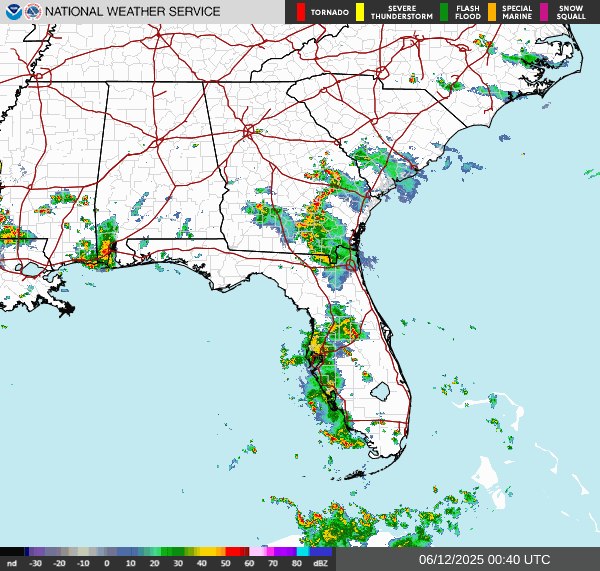











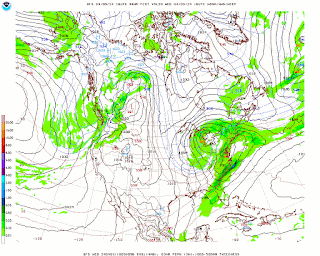















.png)








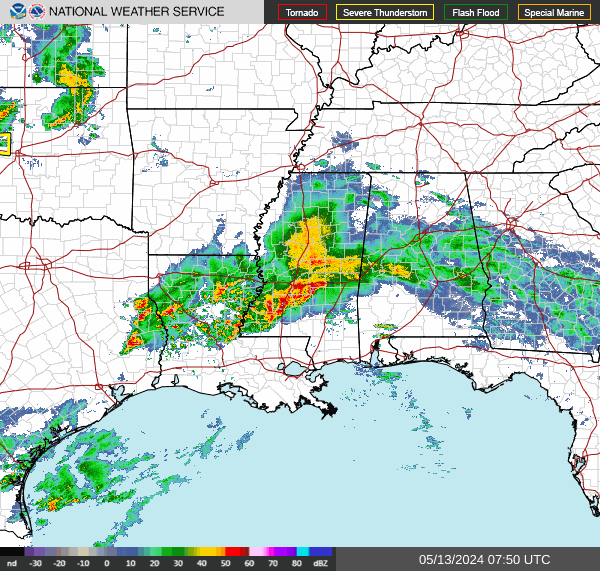
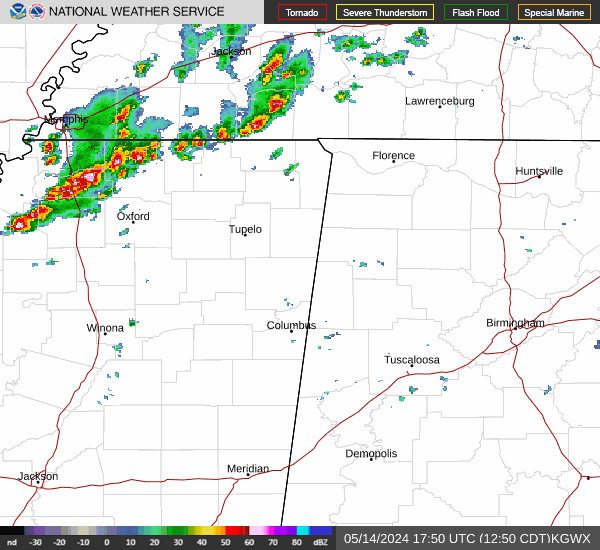
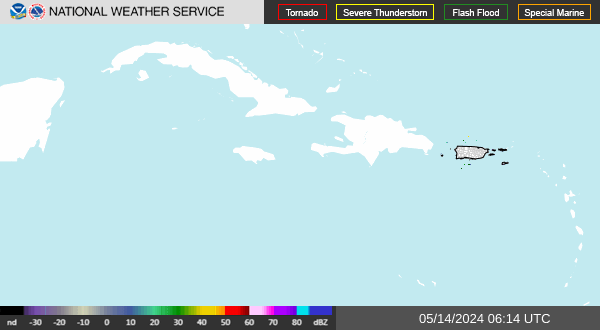




No comments:
Post a Comment